The pandemic accelerated far-reaching global mega trends from labor shortages and supply chain uncertainty, to the individualized consumer and growing pressure to operate sustainably and resiliently – leading new businesses to look to robotic automation. As technology opens new opportunities for meeting customer demands, new trends will continue to emerge that will further drive demand in areas where robots have traditionally not been used. With demand for robots growing as companies in multiple sectors look for new ways to enhance their productivity and competitiveness post-pandemic and acceleration continues for robots in new sectors like logistics and retail, and speeds up for EV production. With many countries restricting and phasing out the production of combustion engine vehicles over the next decade, the race towards electric cars has accelerated. Manufacturers and their supply chains must tackle the complexity of diversifying into EVs alongside combustion-engine vehicles, to meet varying regulatory frameworks governing EV adoption across the globe. The speed and added flexibility needed will see new and established manufacturers move away from traditional linear manufacturing, towards modular, flexible production.
Secondly, the E-commerce boom will accelerate, Consumer behavior and expectations are driving companies to find new ways to satisfy demand, developing new channels through omnichannel retailing and adapting their production lines and distribution processes to enable personalization of both products and delivery. Fulfilling these requirements has seen thousands of robots installed worldwide where they were not used just five years ago, and this rapid rate of automation will continue in 2022 driven by a combination of consumer trends and a growing shortage of labor. Going forward, more robots will appear in more places – and workers will need new skills. Smaller, more affordable, and easy-to-use robots, are helping to remove many of the bar.
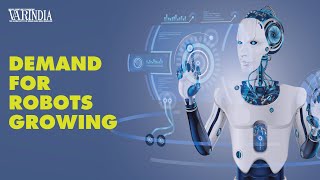
The pandemic accelerated far-reaching global mega trends from labor shortages and supply chain uncertainty, to the individualized consumer and growing pressure to operate sustainably and resiliently – leading new businesses to look to robotic automation. As technology opens new opportunities for meeting customer demands, new trends will continue to emerge that will further drive demand in areas where robots have traditionally not been used. With demand for robots growing as companies in multiple sectors look for new ways to enhance their productivity and competitiveness post-pandemic and acceleration continues for robots in new sectors like logistics and retail, and speeds up for EV production. With many countries restricting and phasing out the production of combustion engine vehicles over the next decade, the race towards electric cars has accelerated. Manufacturers and their supply chains must tackle the complexity of diversifying into EVs alongside combustion-engine vehicles, to meet varying regulatory frameworks governing EV adoption across the globe. The speed and added flexibility needed will see new and established manufacturers move away from traditional linear manufacturing, towards modular, flexible production.
Secondly, the E-commerce boom will accelerate, Consumer behavior and expectations are driving companies to find new ways to satisfy demand, developing new channels through omnichannel retailing and adapting their production lines and distribution processes to enable personalization of both products and delivery. Fulfilling these requirements has seen thousands of robots installed worldwide where they were not used just five years ago, and this rapid rate of automation will continue in 2022 driven by a combination of consumer trends and a growing shortage of labor. Going forward, more robots will appear in more places – and workers will need new skills. Smaller, more affordable, and easy-to-use robots, are helping to remove many of the bar
Technology video | 953 views

Watch Salesforce Automation | Salesforce RollOut in BISP Email Automation in BISP APP With HD Quality
Education video | 3123 views

Watch Salesforce Automation | Salesforce RollOut in BISP Email Automation in BISP APP With HD Quality
Education video | 2022 views

Planning Data Load Rule Automation Using EPMAutomate | Oracle Planning Automation | PBCS Automate
Email Us: support@bisptrainings.com, support@bispsolutions.com
Call us: +91 7694095404 or+1 678-701-4914
Please don’t forget to Like, Share & Subscribe
Follow us on Facebook: https://www.facebook.com/bisptrainings/
Follow us on Twitter: https://twitter.com/bisptrainings
Follow us on LinkedIn: https://www.linkedin.com/company/13367555/admin/
Planning Data Load Rule Automation Using EPMAutomate | Oracle Planning Automation | PBCS Automate
Education video | 1045 views
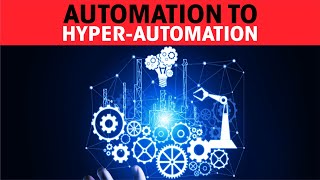
AI is programmed with logic and rules to mimic human decision making. AI can be used to detect threats such as changes in user behaviour or increased data transfers. Automation is the use of technology to perform tasks with reduced human assistance.
Any industry that encounters repetitive tasks can use automation, but automation is more prevalent in the industries of manufacturing, robotics, and automotives, as well as in the world of technology—in IT systems and business decision software. The most complex level of automation is artificial intelligence automation.
The addition of AI means that machines can “learn” and make decisions based on the past situations they have encountered and analysed. For example, in customer service, virtual assistants can reduce costs while empowering both customers and human agents, creating an optimal customer service experience.
Here we are talking about the next generation of automation, that is Hyper automation. Hyper-automation is a business-driven, disciplined approach that organizations use to rapidly identify, vet and automate as many business and IT processes as possible. Hyper-automation involves a mix of artificial intelligence, machine learning, robotic process automation, integration platform as a service and low-code or no-code tools.
We have seen there has been a great shift from Automation to Hyper-automation. When companies use RPA with IT Automation with AI, the impact is mainly positive. However, there is still a need for integrating different software approaches and applications to get even better results.
Hyper-automation integrates RPA, process mining, machine learning, and artificial intelligence. The automation process, in this case, is even more efficient and in-depth. It can help experts or teams focus on other critical services. It also helps to ensure that experts have enough room to work with and essentially expand their scope. The market for hyper-automation s
Technology video | 982 views
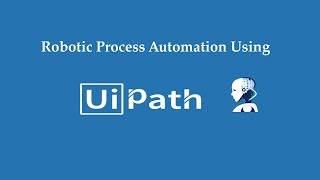
In this demo you will get to know how Uipath enables you to deploy, schedule, monitor and manage Robots and processes.
Course Content : http://www.bisptrainings.com/course/Robotic-Process-Automation-Using-UiPath
Watch Robotic Process Automation Using UiPath With HD Quality
Education video | 757 views
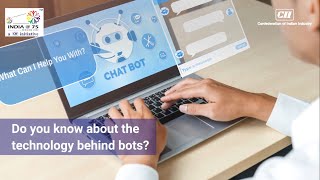
Robotic Process Automation enables users to create software robots, or #Bots, that can observe, mimic & execute repetitive, time consuming #Digital #business processes by studying human actions.
Watch the video to know how RPA is transforming #businesses.
#ArtificialIntelligence
Robotic Process Automation is transforming businesses across the world
News video | 215105 views
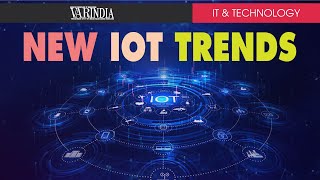
#IoT #Japan #fastestinternetspeed
New IoT trends
IoT is forecasted to be a major disruptor in 2021. It is expected to reshape technology and business. IDC expects that global IoT spending will return high growth rates in 2021 and achieve a combined annual growth rate (CAGR) of 11.3% over the 2020-2024 forecast period. Today, millions of people have moved to remote work, putting themselves at risk of cyber-attacks due to a lack of effective cyber protection measures. As more and more employees move to remote work, cybersecurity specialists and IoT advocates are now developing new technologies and IoT-enabled security strategies to bridge this gap. AI continues to support the critical processes of companies and governments, helping to ensure uninterrupted delivery, social distancing, and even help accelerate understanding of the novel COVID-19 virus leading to an accelerated roll-out of the COVID-19 vaccine.
Specifically in eCommerce, research suggests that AI will enable organizations to market more effectively to their customers, based on behavioural data customers have exhibited through this massive economic shift due to COVID-19. To this point, AI-enabled IoT is projected to continue to accelerate business and foster new innovation in today’s new dynamic business landscape throughout 2021. Secondly, when we see how the trends are impacting in the areas of Industrial IoT or IIoT is defined as “Machines, computers, and humans enabling intelligent industrial processes using advanced data analytics for revolutionary business outcomes”. It is going to play a big role in Industrial IoT in 2021. The evolution of 5G will make a great impact on the connectivity of the Industrial IoT industry. The 5G network will allow the IoT devices to communicate the data at a faster speed, increased security, and greater reliability to support mission-critical operations
Today's Headline in NewsHours
0:00 Intro
2:24 #Japan set
Technology video | 221 views

The Latest Fashion Trends for 2015! Today's video shows you how to style Runway Trends in everyday life. These are the biggest 2015 Fashion Trends as spotted during Fashion Week S/S 15 collections.
Beauty Tips video | 1224 views
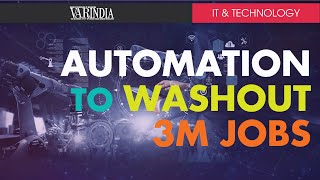
#automation
Automation to washout 3M jobs
With automation taking place at a much faster pace across industries especially in the tech space, domestic software firms that employ over 16 million are set to slash headcounts by a massive 3 million by 2022, which will help them save a whopping $100 billion mostly in salaries annually, as per a recent report. Today’s business world is continuously being disrupted – through evolution of new-age technologies, the global pandemic and the resultant lockdown, the list is endless. In such a scenario, no business model can remain standard, no process can remain constant. Businesses must reimagine their operating model, look for better solutions to their problems and keep on evolving and innovating.
Businesses are increasingly integrating new-age technologies in their existing IT infrastructure to make their process seamless and customer targeting effective. This has given rise to a lot of interesting business models such as Insurance Tech, Finance Tech, Education Tech, Marketing Automation, etc. Every function of a business is being reimagined to enhance efficiency and ROI. However, as technology is disrupting existing industries and creating a lot of innovative sectors, the business processes are getting more sophisticated and complex. Now, ‘One solution fits all industries’ kind of strategy is proving to be ineffective and businesses are compelled to look for solutions that are custom made for their respective industries. Technology solutions providers have gazed at this opportunity, and started to customize their solutions as per the requirements of different industries. The rise of industry-specific cloud is one such solution.
Follow Us On :-
https://www.facebook.com/VARINDIAMagazine/
https://twitter.com/varindiamag
https://www.instagram.com/varindia/
https://www.linkedin.com/company/14636899/admin/
https://in.pinterest.com/varindia
Technology video | 174 views

Bigg Boss 18 OPENING VOTING Trend | Vivian Vs Karan Vs Digvijay Kisko Hai Highest Votes
#biggboss18 #avinashmishra #viviandsena
Follow Aditi On Instagram - https://www.instagram.com/pihuaditi/
Bigg Boss 18 OPENING VOTING Trend | Vivian Vs Karan Vs Digvijay Kisko Hai Highest Votes
Entertainment video | 4812 views

Bigg Boss 18 Promo | Wild Card Entries Ne Avinash, Rajat Aur Vivian Ko Phasa Diya
#biggboss18 #avinashmishra #viviandsena
Follow Aditi On Instagram - https://www.instagram.com/pihuaditi/
Bigg Boss 18 Promo | Wild Card Entries Ne Avinash, Rajat Aur Vivian Ko Phasa Diya
Entertainment video | 2630 views

Yeh Rishta Kya Kehlata Hai | Abhir Ko Hoga Kiara Se Pyaar, Show Mein Love Angle
#yehrishtakyakehlatahai #yrkkh
- Stay Tuned For More Bollywood News
☞ Check All Bollywood Latest Update on our Channel
☞ Subscribe to our Channel https://goo.gl/UerBDn
☞ Like us on Facebook https://goo.gl/7Q896J
☞ Follow us on Twitter https://goo.gl/AjQfa4
☞ Circle us on G+ https://goo.gl/57XqjC
☞ Follow us on Instagram https://goo.gl/x48yEy
Yeh Rishta Kya Kehlata Hai | Abhir Ko Hoga Kiara Se Pyaar, Show Mein Love Angle
Entertainment video | 2647 views

Bigg Boss 18 | MID WEEK EVICTION | Shocking Ye Contestant Hoga Evict
#biggboss18 #avinashmishra #viviandsena
Follow Aditi On Instagram - https://www.instagram.com/pihuaditi/
Bigg Boss 18 | MID WEEK EVICTION | Shocking Ye Contestant Hoga Evict
Entertainment video | 2542 views

Yeh Rishta Kya Kehlata Hai | Armaan Ke Karib Aayi Ruhi, Phir Pyaar Me Hui Beqaboo
#yehrishtakyakehlatahai #yrkkh
- Stay Tuned For More Bollywood News
☞ Check All Bollywood Latest Update on our Channel
☞ Subscribe to our Channel https://goo.gl/UerBDn
☞ Like us on Facebook https://goo.gl/7Q896J
☞ Follow us on Twitter https://goo.gl/AjQfa4
☞ Circle us on G+ https://goo.gl/57XqjC
☞ Follow us on Instagram https://goo.gl/x48yEy
Yeh Rishta Kya Kehlata Hai | Armaan Ke Karib Aayi Ruhi, Phir Pyaar Me Hui Beqaboo
Entertainment video | 2535 views

Yeh Rishta Kya Kehlata Hai | Ruhi Par Bhadka Armaan, BSP Se Dur Rehne Kaha
#yehrishtakyakehlatahai #yrkkh
- Stay Tuned For More Bollywood News
☞ Check All Bollywood Latest Update on our Channel
☞ Subscribe to our Channel https://goo.gl/UerBDn
☞ Like us on Facebook https://goo.gl/7Q896J
☞ Follow us on Twitter https://goo.gl/AjQfa4
☞ Circle us on G+ https://goo.gl/57XqjC
☞ Follow us on Instagram https://goo.gl/x48yEy
Yeh Rishta Kya Kehlata Hai | Ruhi Par Bhadka Armaan, BSP Se Dur Rehne Kaha
Entertainment video | 2506 views

IND vs SA | World Cup T20 2024 | Match Preview and Stats | Fantasy 11 | Crictracker
Welcome to the exhilarating showdown between India vs South Africa in the World Cup T20 2024 season! Get ready for an electrifying clash as these two powerhouse teams, fueled by raw talent and strategic brilliance, lock horns for cricketing supremacy.
Join us as the India, led by their charismatic captain, face off against the South Africa, determined to showcase their prowess on the pitch. With star-studded lineups boasting top-tier international players and emerging talents, expect nothing short of cricketing excellence and heart-stopping moments.
Don't miss a single moment of the action, drama, and excitement as these teams battle it out in the high-stakes arena of World Cup T20 2024. From breathtaking boundaries to strategic masterstrokes, witness every twist and turn in this epic showdown.
IND vs SA | World Cup T20 2024 | Final | Match Preview and Stats | Fantasy 11 | Crictracker
Sports video | 13957 views

IND vs ZIM | T20 | Match Preview and Stats | Fantasy 11 | Crictracker
Welcome to the exhilarating showdown between India vs Zimbawe in the T20 series! Get ready for an electrifying clash as these two powerhouse teams, fueled by raw talent and strategic brilliance, lock horns for cricketing supremacy.
Join us as the India, led by their charismatic captain, face off against the Zimbawe, determined to showcase their prowess on the pitch. With star-studded lineups boasting top-tier international players and emerging talents, expect nothing short of cricketing excellence and heart-stopping moments.
Don't miss a single moment of the action, drama, and excitement as these teams battle it out in the high-stakes arena of this T20 series. From breathtaking boundaries to strategic masterstrokes, witness every twist and turn in this epic showdown.
IND vs ZIM | T20 | Match Preview and Stats | Fantasy 11 | Crictracker
Sports video | 3539 views

Watch as our employees try to guess the famous cricketers from just a few clues. Can you beat them at their own game? Test your cricket knowledge and see how many cricketers you can guess correctly. Don’t forget to like, comment, and subscribe for more fun office challenges and cricket trivia! #CricketChallenge #OfficeFun #guessthecricketer #crickettrivia
Office Fun Challenge: Guess the Cricketers? #office #crictracker #cricketlover ????
Sports video | 1606 views

IND vs BAN | T20 | Match Preview and Stats | Fantasy 11 | Crictracker
Welcome to the exhilarating showdown between India vs Bangladesh in the T20 series! Get ready for an electrifying clash as these two powerhouse teams, fueled by raw talent and strategic brilliance, lock horns for cricketing supremacy.
Join us as the India, led by their charismatic captain, face off against the Bangladesh, determined to showcase their prowess on the pitch. With star-studded lineups boasting top-tier international players and emerging talents, expect nothing short of cricketing excellence and heart-stopping moments.
Don't miss a single moment of the action, drama, and excitement as these teams battle it out in the high-stakes arena of this T20 series. From breathtaking boundaries to strategic masterstrokes, witness every twist and turn in this epic showdown.
IND vs BAN | T20 | Match Preview and Stats | Fantasy 11 | Crictracker
Sports video | 4253 views

IND vs SL | T20 | Match Preview and Stats | Fantasy 11 | Crictracker
Welcome to the exhilarating showdown between India vs Sri Lanka in the T20 series! Get ready for an electrifying clash as these two powerhouse teams, fueled by raw talent and strategic brilliance, lock horns for cricketing supremacy.
Join us as the India, led by their charismatic captain, face off against the Sri Lanka, determined to showcase their prowess on the pitch. With star-studded lineups boasting top-tier international players and emerging talents, expect nothing short of cricketing excellence and heart-stopping moments.
Don't miss a single moment of the action, drama, and excitement as these teams battle it out in the high-stakes arena of this T20 series. From breathtaking boundaries to strategic masterstrokes, witness every twist and turn in this epic showdown.
IND vs SL | T20 | Match Preview and Stats | Fantasy 11 | Crictracker
Sports video | 3865 views

IND vs SL | T20 | Final | Match Preview and Stats | Fantasy 11 | Crictracker
Welcome to the exhilarating showdown between India vs Sri Lanka in the T20 series! Get ready for an electrifying clash as these two powerhouse teams, fueled by raw talent and strategic brilliance, lock horns for cricketing supremacy.
Join us as the India, led by their charismatic captain, face off against the Sri Lanka, determined to showcase their prowess on the pitch. With star-studded lineups boasting top-tier international players and emerging talents, expect nothing short of cricketing excellence and heart-stopping moments.
Don't miss a single moment of the action, drama, and excitement as these teams battle it out in the high-stakes arena of this T20 Final. From breathtaking boundaries to strategic masterstrokes, witness every twist and turn in this epic showdown.
IND vs SL | T20 | Final | Match Preview and Stats | Fantasy 11 | Crictracker
Sports video | 3484 views